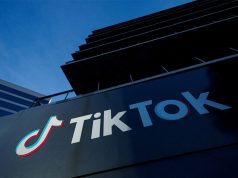MANILA – The central bank is reviewing the single borrower’s limit (SBL) imposed on banks to provide leeway for infrastructure financing, an official said, which is seen to support the government’s massive spending program.
Bangko Sentral ng Pilipinas (BSP) Deputy Governor Diwa C. Guinigundo said monetary authorities are looking to relax borrower limits anew to accommodate bank lending for big-ticket projects, possibly similar to the special 25% cap for public-private partnership (PPP) projects.
“It’s under study,” Guinigundo said on the sidelines of the 1st Global Forum on Infrastructure Strategies last Thursday.
The SBL is intended to limit credit exposure to a single client to a maximum of 25% of a bank’s net worth. This is to minimize risks on the bank in the case of the borrower’s default.
The ceiling — which has been in place since 2004 — covers loans, as well as securities underwritten by universal banks and investment houses unsold after 90 days.
In 2010, the central bank provided a separate 25% credit limit for PPP projects, which was meant to encourage banks to fund infrastructure goals of the administration then of former president Benigno S.C. Aquino III. This SBL lapsed in December 2016.
“Now, the BSP is consulting with the banks the feasibility of carving out again the SBL as long as this is going to fund infrastructure,” Mr. Guinigundo said. “Infrastructure involves big-ticket items. P8 trillion [planned infrastructure spending up to 2022] — that’s about 2.5 times of your national budget.”
He clarified that the new lending cap will come “with certain modifications” but refused to provide details as discussions are ongoing.
“That’s the priority of the government. Ayaw nila masyado ng (The current government is not too keen on) PPP because of the length of time that it consumes before it can even take off the ground,” the BSP official added.
The Duterte administration is looking to spend P8.44 trillion from 2016 to 2022 on infrastructure projects, as it veered away from the PPP model in favor of a “hybrid” mode where the government takes on the construction phase. Several projects in the pipeline — including railways, airports, and toll roads — will then turned over to the private sector for operation and maintenance.
Economic managers said the aggressive public spending will be supported by a mix of government debt, foreign aid and additional revenues expected from up to five packages of the comprehensive tax reform program.
Massive infrastructure spending agenda is expected to propel economic growth to average 7-8% annually by 2022, while addressing connectivity and logistics bottlenecks in order to improve the ease of doing business in the Philippines.










